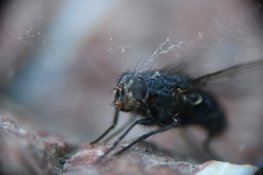I am fairly new to Photography in general but i want to try my luck with one or two rolls of Macro shots. My equipment consists of a Nikon F4, with a dedicated AF MICRO 105mm f/2.8 1:1 Macro lens. I think its the MK1 version and its kind of weird as the normal Nikon lens caps don't fit on it making it impractical to take outside sadly. Anyway i also have a AF 1.6X teleconverter which should make it possible to get an even greater magnification but i am unsure if that is something that is recommended?
I plan on shooting indoors and setting up a diy-lightcage but as i have basically no experience with lighting all i know is that its good to have glancing, diffused light from preferably 2 or more sources. I expect the only thing i will be able to really mess up will be the lighting as ISO and presumably focal distance will be fixed. Or am i wrong here and the apperature makes all the difference here? I am under the assumtion that i will have to choose the apperature based on the most opportune focal plane/distance. Is there anything that i need to pay special attention too? Any common mistakes to avoid? I am watching a lot of Allan Walls on this topic but if you have any recommendations in regards to great explanatory videos in regards to macro photography i would be interested to check them out.
The scary part is that with film focus stacking isn't an option and i am scared i will waste a lot of film if i don't consider everything.
I would appreciate any input, thanks in advance.
I plan on shooting indoors and setting up a diy-lightcage but as i have basically no experience with lighting all i know is that its good to have glancing, diffused light from preferably 2 or more sources. I expect the only thing i will be able to really mess up will be the lighting as ISO and presumably focal distance will be fixed. Or am i wrong here and the apperature makes all the difference here? I am under the assumtion that i will have to choose the apperature based on the most opportune focal plane/distance. Is there anything that i need to pay special attention too? Any common mistakes to avoid? I am watching a lot of Allan Walls on this topic but if you have any recommendations in regards to great explanatory videos in regards to macro photography i would be interested to check them out.
The scary part is that with film focus stacking isn't an option and i am scared i will waste a lot of film if i don't consider everything.
I would appreciate any input, thanks in advance.




